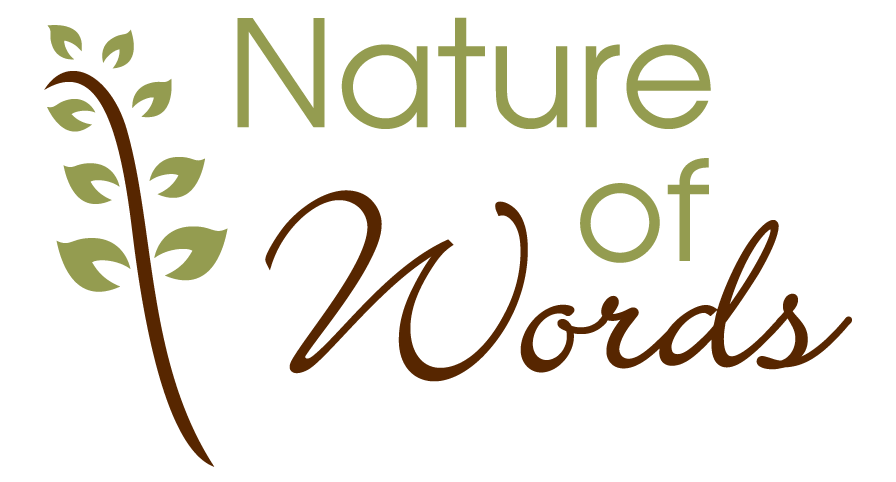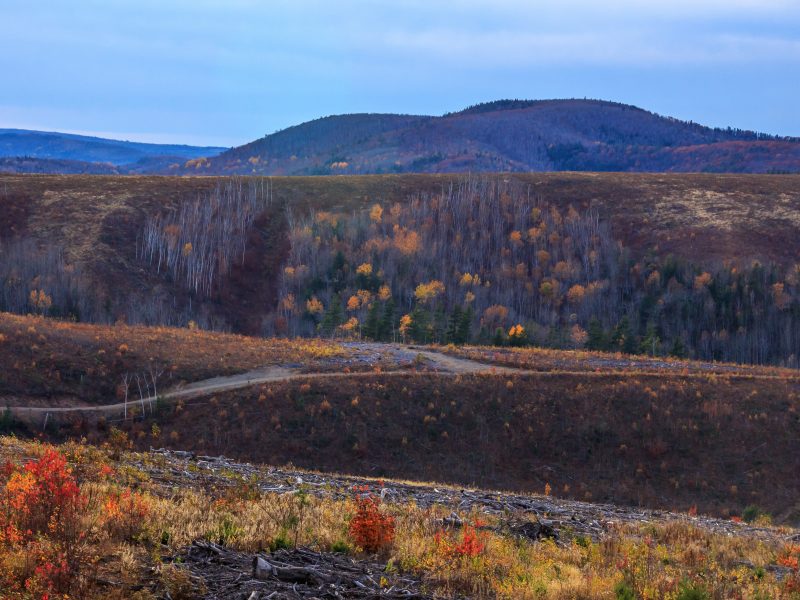
Can’t See the Forest or the Trees
(Saltscapes Magazine, Jan 2018)
Is it time for tough questions on woodland management? Is an industrial softwood tree farm still a forest?
For as long as I can remember, an autumn drive on the rural roads surrounding Elgin, NB has been a feast for the eyes. It’s home for me, part of my heritage; a landscape of farmer’s fields, steep hillsides of brilliant sugar maples, clear boulder-tumbled rivers and waterfalls.
But just beyond the line of sight, I find a very different landscape. Single species tree plantations replace natural forest. Industrial clearcutting operations scrape every living thing from the soil my ancestors settled, leaving nothing but a scattering of chewed and dismembered limbs. Tractor trailers queue up, waiting for the next load of maple, birch, pine and spruce logs or chips.
Some of this is industrial freehold (company-owned), but some is Crown. This is ours. The people’s land; held in the public trust.
But has that trust been broken?
It’s a story playing out throughout New Brunswick and Nova Scotia’s rural countryside far from urban eyes. In 2014, New Brunswick’s Conservative government signed a secretive forestry agreement with JD Irving, Ltd. granting an unprecedented two and a half million cubic feet of timber every year for 25 years (a 20 per cent increase), surrendering a quarter of previously conserved land for logging, reducing buffers, increasing clearcut size, while doubling the areas for tree plantations to roughly one-quarter of Crown forests.
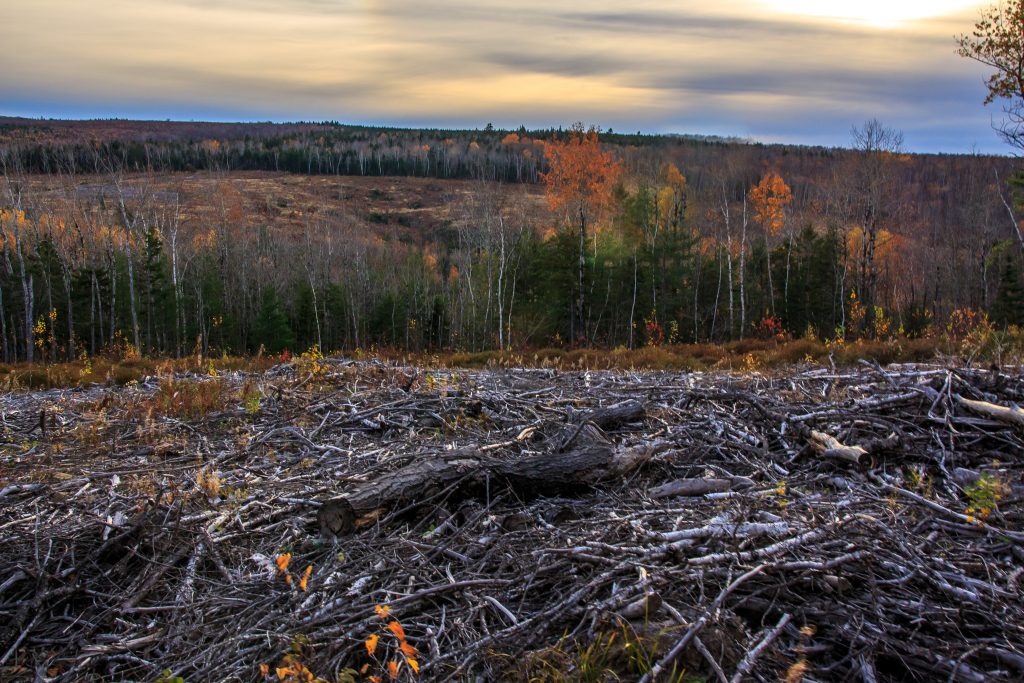
Industrial clear-cuts near Parkindale, NB. (Photo D. Carr)
Roberta Clowater has worked in forest conservation for 25 years. As executive director of the Canadian Parks and Wilderness Society in New Brunswick, she’s experienced her share of triumphs and defeats, but this one was profound. “I felt I’d been underserved by the people in government,” she says. “Such an agreement does nothing to preserve the productivity of the forest.” Her feelings were echoed by hundreds of protesters at the Legislature, and by 184 academics from four universities and the Maritime College of Forest Technology who issued an open letter calling for a halt to the agreement.
“Successive governments have shown their vision for Crown land is industrialized and doesn’t have enough of a conservation safety net,” she says. “All our rivers have headwaters on Crown land, so its vitally important that we protect the ecological integrity upon which our economy is dependent. If we’re not paying attention to ecological resilience, then it will be difficult to count on our forest to be productive—whether for lumber, pulp, wildlife, cold rivers that house salmon or a diverse supply of areas for recreation.”
The situation is similar in Nova Scotia where 85 to 90 per cent of commercial harvesting is clearcut or whole-tree harvest (nothing remains to replenish/protect soil). In October, hundreds gathered in Halifax for a symbolic Funeral for the Forest to mourn the death of biodiversity, healthy forests and wildlife. They were protesting the government’s broken 2010 promise to reduce clearcutting by 50 percent over five years. Meanwhile, industrial harvesting continues in some of the province’s most beautiful tourism areas: Wentworth Valley, the Tobeatic, and Cape Breton.
Jamie Simpson is a professional registered forester, author of two books on the Acadian forest, and an environmental lawyer. He co-authored a 2015 study that found DNR hasn’t fulfilled its legal obligations under the Endangered Species Act with respect to 20 of Nova Scotia’s 37 endangered or threatened species, and that it’s failed to complete recovery plans and identify core habitat for a number of species at risk.
“In order to kill one animal, a hunter (needs) a gun safety course, licences and must follow regulations,” says Jamie. “But if you want to kill a whole variety of species by cutting 100 hectares of forest? Well, there’s no regulation at all for that.”
He’s also concerned about inadequate buffer zones and depletion of the soil. These are serious issues. While the public voices speaking out in both provinces are diverse, well-informed, and persistent, there are others who have been quietly protecting small islands of natural forest in an effort to help slow the demise of the original Acadian forest.
Mapleton Acadian Forest Preserve, Elgin, NB
Moranda van Geest pauses beside a majestic Eastern Hemlock a full 90cm in diameter. “This,” she says, patting the deep furrows of ridged bark, “might be the most photographed tree in Elgin.”
On this late autumn day, we’re standing ankle deep in crumpled leaves alongside a mossy rock-strewn brook in a hollow; all is cast in golden mid-afternoon light. Pale leaves drift like confetti, settling with a whisper on the ground.

When the forest hosting a community-built hiking trail was threatened with clear-cutting, Moranda Van Geest found a solution: Buy it. (Photo D. Carr)
This is the Acadian Forest Nature Preserve; home to flying squirrels and endangered chimney swifts. This new and old growth forest features streams, ravines, a maple sugar camp, and an ecologically sensitive area of giant hemlocks. Such natural mixtures of softwood and hardwood are an increasingly rare treasure. Less than five per cent of natural old growth Acadian forest remains. Its tranquility is a sharp contrast to the clearcuts just up the road.
Moranda helped found the Elgin Eco Association (EEA), a dedicated group that has accomplished much for a rural area with a population of 400. The preserve is their crowning achievement.
In 2002, EEA received permission from the landowner to use the property, and then constructed the woodland trails, footbridges and a look-off.
“I still recall when a few people with great intentions traipsed through these woods, set on preserving this old growth legacy for generations to come,” she says. “They came with saws and trimmers; not to cut down, but to build.”
The trail brought hikers and snowshoers, birdwatchers and geo-cachers into the community. All was well until 2016 when the property was sold to a private business interest and slated for clearcutting.
“When we first heard, we were scrambling,” says Moranda. The new landowner agreed to sell it for $75,000. She told her group it was too much to raise.
But a younger member implored her to try. “She was so convincing. I thought if we can’t support the young people in their belief they can make a difference by saving a piece of land, then what are we here for?” In the coming months, the group acquired the Nature Trust of New Brunswick as a partner, and through crowdfunding and a variety of events and activities, they raised the money.
She says the project allowed locals some control over what they’ve lost. “They’re angry because everything they love is being taken away. The logging trucks go by 24-7. The roads are broken up and washed out, brooks run dirty, there’s more erosion, moose are wandering about wondering what happened to their home. People feel helpless. Government does nothing. In the city, people have no idea what is happening here.”
“This was a chance to preserve something that no one can take away,” says Moranda. “The forest is not a commodity. No one owns the land. We just move money around so we can use it in our lifetime. It’s an eco-system that belongs to whatever lives on it. We have to preserve what’s in our care, so it can do what it’s supposed to do forever.”
Whaelghinbran Farm, Sussex, NB
Sue Tyler shows me the land she and her husband Clark Phillips farmed organically for 40 years. Clark has passed away, but Sue remains, bringing in her own wood, and tending a small garden, despite using walking sticks to support arthritic knees. But none of this hinders a cheerful countenance that reflects an abiding love for the place she calls home. A place that inspires her poetry and feeds her soul.
In the 70s, Sue and Clark operated a commercial farm on the outskirts Saint John, but city sprawl drove them to Whaelghinbran Farm, located in an isolated valley outside of Sussex. For the next 40 years, they experimented with restoration forestry, while advocating a sound land ethic.
“We were interested in being on the land and growing our own food,” says Sue. “We learned from and became part of the woods that surround us.”
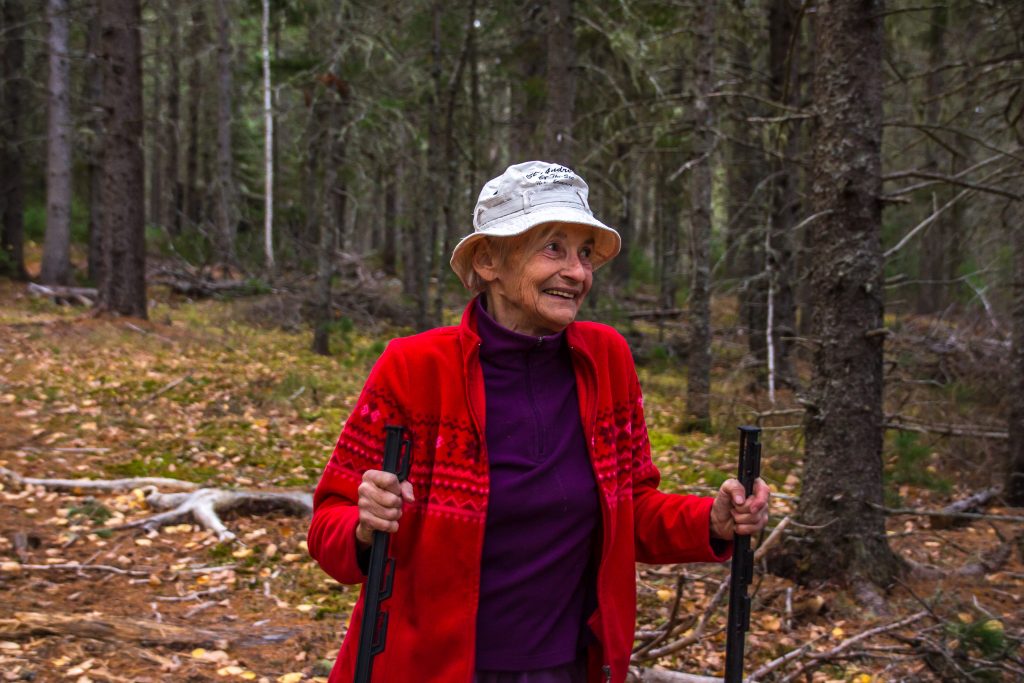
Sue Tyler wanted to ensure a continuing legacy of sound forestry management that she and her husband started on their land. (Photo D. Carr)
Over time, they nudged the forest back to its natural pre-European character. They cut trees to let in the light and increase diversity, speeding up its growth by 30 years, and proving a living can be acquired from the woods without destroying it.
At one point, they walked the property with well-known botanist, Hal Hinds, who said, “This place itself is special and unique, because it exists in the size that it does with people living here.”
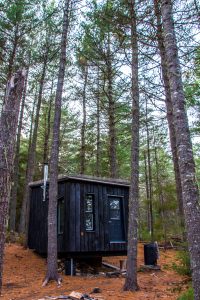
CFI built several tiny cabins on Whaelghinbran Farm.(Photo D. Carr)
In 2012, the couple sold their 750 acres of farm and Acadian forest to Community Forests International (CFI), a local grassroots organization. CFI constructed a bunkhouse, innovative tiny-cabins, and composting toilets, turning the farm into a “rural innovation campus”—a teaching ground for people wanting to live in harmony with nature. Clark and Sue were happy to remain and share how they’d farmed and sustained an economically-viable, diverse and natural woodlot…sometimes using horses.
But just past the ridge in front of the farm, heavy machinery has skinned almost 1,500 acres of Crown land that now sprawls barren in stark contrast to the thickly forested sweep of private land abutting it. Destined to become a tree plantation, it’s been rendered unproductive and unusable for decades to the public that owns it. Then it will be cut again.
“They’re changing the nature of the landscape,” says Sue.
Dale Prest is an ecologist with CFI. He says the trio of tree-planting friends who founded the non-profit a decade ago also spearheaded successful community forest projects in Tanzania to improve economic opportunities before seeking similar projects in rural New Brunswick.
Dale joined CFI as it was entering into the agreement with Clark and Sue, who were aging and wanted their land to be a lasting legacy of their work and commitment.
“My family was in the forestry industry forever,” he says. “My dad still earns a living with a power saw.” Growing up, he felt a strong connection with the work and the land itself, and witnessed what increasing efficiencies and changing market conditions were doing to the forest.
“I realized the unsustainable path the industry was on—a complete conversion of our forest ecosystems into unproductive softwood plantations –and I didn’t want anything to do with that.”
His expertise lies in the carbon storage potential of trees and soil. “Trees are solar-powered carbon vacuums,” he says. “They just need a little sun and water to operate. They’re our secret weapon in the fight against climate change.”
In fact, it was carbon storage potential that enabled CFI to purchase Whaelghinbran. They partnered with a central Canada company interested in purchasing carbon credits to offset their climate impact. The funds earned by selling the credits gave CFI the capital needed to buy the property.
Carbon offsetting turns the economic and jobs justification for clearcutting and current forestry practices on its ear. “We’ve sold $350,000 of carbon credits on 750 acres and if we wanted, we could still cut every tree. Just not all at once,” says Dale. “We built a project that conserved these 750 acres and preserved a legacy of ecological restoration. It’s now being looked at as a model for private woodlot owners who want to treat their properties with respect.”
Munro’s Mountain Maple, Black River, Nova Scotia
Perry Munro looks forward to October with anticipation. One of his joys is a canoe paddle to his own bog where he picks cranberries; it’s a combination of the smooth water, autumn leaves, loons, eagles, the scent of fall in the air.
He bought his first acreage while still in his teens, eventually accumulating 600 acres of mixed Acadian forest, lake, bog, maple woods, though he has less now. He’s maintained productive, healthy land, encouraged natural growth, and made a living with it: harvesting trees, operating a maple sugar operation, sawing logs, selling firewood, picking berries, creating nature-inspired art, sculpture and writing. He’s also a licensed hunting and fishing guide.
To say the land has shaped him as a man would be an understatement. He’s spent countless hours on his woodlots: some areas have never seen an axe. Now, in his 70s, he’s passing parcels on to his children trusting he’s instilled a land ethic that compels them to also treat it with respect.
He’s angry that government doesn’t consider the coming generations in its own treatment of Crown land.
“It’s not a stand of trees we’re dealing with … it’s habitat and the key to wildlife survival,” he says. On his own land, he observes the movements and habit of resident creatures, carefully maintaining wildlife corridors, nesting sites and stream protection. Some of his land is surrounded by clearcuts, but he feels lucky that many parcels belong to private woodlot owners who are good forest managers.
“Crown land is the people’s land. They should be concerned with how their land is being abused. I’m just one of many people who believe that proper management is a good thing for wildlife and your own sense of purpose. Most private woodlot owners are pretty damn good at what they do. We have more of an idea of the worth of things than anyone else.”
Saltscapes Magazine, Dec 2017/January 2018
